The rise in electricity tariffs and the short life of incandescent lamps have led to the popularization of economical light sources with a longer service life. Manufacturers offer two options for technological solutions - LED devices and luminescent products. To determine which lamps are best for the home - LED or energy-efficient - a comparative analysis should be carried out.
Design features
For an objective comparison, we will consider the design features and characteristics of LED and compact fluorescent lamps with an E27 base for a standard cartridge. The LED lamp consists of an LED emitter, a built-in driver, a radiator, a housing and a base. LEDs are covered with a matte or transparent plastic bulb, there are also open designs.
The compact fluorescent lamp contains a twisted gas-filled tube, an electronic ballast, a housing and a base. A sealed glass flask is filled with an inert gas and mercury vapor, and the inner surface of the tube is coated with a fluorescent compound.
What is the difference between LED lamps and energy-saving lamps?
LED sources produce light by direct conversion from electrical current. Semiconductor crystals emit blue light, so they are coated with a phosphor that forms the yellow spectrum of the light wave. The proportional mixing of the yellow and blue spectrum creates gradations of cold, white and warm shades corresponding to color temperatures of 5000K, 4000K and 3000K.
The principle of operation of luminescent sources is to create high-voltage discharges of electric current in the gaseous medium of the bulb between the electrodes. The gas emits ultraviolet radiation, which affects the phosphor, creating a white glow effect. The correct operation of the device is ensured by the electronic control gear installed in the device case.
Manufacturers produce light sources that differ in power, light output, color temperature, service life, and ripple coefficient. To adequately assess the economic benefits and health effects of fluorescent and LED lamps, it is necessary to compare the factory specifications, confirmed by operating experience.
Luminous flux and efficiency
The luminous flux determines the amount of light emitted by the source. The ratio of luminous flux to power consumption characterizes energy efficiency. These parameters are indicated on the product packaging.
The LED lamp with a power of 10 W produces a luminous flux of 800 lm. A fluorescent lamp with this luminous flux indicator consumes 16 watts of electricity. The savings in electricity consumption of LED lamps relative to energy-saving ones exceeds 1.5 times.Modern indicators of the luminous flux of LED sources at a power of 10 W reach 1000 lm, which doubles the efficiency relative to fluorescent devices.
The term "energy-saving lamps" is entrenched in the minds of people behind compact fluorescent devices. LED sources are characterized by greater efficiency, therefore they are reasonably called energy-saving.
Efficiency
The efficiency of a lighting fixture indicates what percentage of electricity is converted into visible light. In a luminescent source, electricity goes through several stages of transformation: powering an electronic ballast, generating a discharge, generating UV radiation, heating a gas medium, and irradiating a phosphor. Each stage of transformation entails energy losses. The start of operation of such devices is accompanied by a dull glow with idle energy consumption for heating the flask, therefore, frequent switching on leads to a decrease in efficiency.
Luminescent devices convert 20-25% of the consumed electricity into visible light. Up to 80% of energy is spent on heating and radiation in invisible ranges. The light from the source is scattered in space. The absence of a reflector reduces the efficiency by up to 15%.
LED bulbs generate light from electricity directly, which eliminates waste of electricity. LED emitters produce a directional beam of light, which also increases efficiency. The efficiency of an LED lamp with a directional light beam reaches 99%, and that of a diffusing structure - 90%.
To increase the efficiency of fluorescent lamps, mirror reflectors are used.
Flicker index
Powering the lighting fixtures with alternating current causes the light to flicker invisible to the eye. Medicine has proven that light pulsations with a frequency of 8 to 300 Hz have a negative effect on vision and the human brain.
Luminescent sources with electromagnetic control gear, when connected to one phase, produce light with a blinking frequency of 100 Hz. It is not recommended to equip apartments with such lamps.
The use of electronic ballasts in compact fluorescent lamps smooths out pulsations, but it is necessary to clarify the presence of electronic, not electromagnetic equipment in the design. The light pulsation coefficient is regulated by document SP52.13330.2011. In residential buildings, the excess of the ripple coefficient of more than 15% is unacceptable.
LED lamps are equipped with switching power supplies or filter drivers. The impulse source gives ripple up to 10%. The use of a driver with anti-aliasing filters reduces the flicker factor by up to 1%.
When buying LED or energy-saving lamps, check the ripple factor, type of ballast and type of power source.
Working temperature
The body of the energy-saving lamp heats up to 75˚C, and the base to 50˚C. Replacing CFLs requires caution, as the loss of tightness in the bulb releases mercury vapor into the atmosphere. The operating temperature of the LED lamp body does not exceed 65˚С, and the base temperature does not exceed 40˚С. The operating temperatures of CFL and LED are not critical for the use of any type of shades.
The light sources function correctly at the permissible ambient temperature. For CFLs, the acceptable range is +5 to + 35 ° C. When operating a fluorescent lamp in cold conditions, start-up time will increase and the service life will be shortened.
LED devices function properly at a low ambient temperature, which provides heat removal from the case. LED devices are not installed close to heating devices. It is not recommended to close the elements with sealed caps that impede the cooling of the device.
Base type
Types of threaded plinths:
- E27 - a standard plinth with a diameter of 27 mm for a household cartridge;
- E14 - plinth with a reduced diameter of 14 mm;
- E40 is a variant with an increased diameter of 40 mm for high power lamps.
Pin types of caps are marked with an index G with a number indicating the distance between the pins.
Before purchasing a lamp with a non-common type of base, check the correspondence of the marking for the given cartridge.
Comparison of shapes and sizes
Luminescent light sources are produced in the form of straight, annular, compactly rolled tubes. Sizes vary widely, but the manufacturing technology does not allow the manufacture of small point sources. The tubes in CFLs are either spiral or horseshoe-shaped.
LED sources are produced in the form of flat panels, long, volumetric lamps, strip illumination, spotlights, lamps of various shapes and sizes. Small recessed LED-JCDR bulbs with GU5.3 pin base are popular. Point sources are built into false ceilings.
LED devices are characterized by small dimensions and weight. An LED lamp with a standard E27 base has the shape and dimensions of an incandescent lamp. CFLs with a similar luminous flux have a large weight and dimensions.
Life time
The service life of a lighting element is measured by the number of hours of trouble-free operation without loss of technical characteristics. The manufacturer of fluorescent lamps tests this parameter at 5-6 switchings per day. The declared CFL resource is from 10 to 15 thousand hours.
Multiple inclusions reduce the service life to 5 thousand hours. The wear of the electrodes and phosphor leads to a decrease in the luminescence intensity, which is also a sign of a loss of operational properties.
The switching frequency does not affect the lifespan of LED devices. The service life reaches 60 thousand hours. LED lamps of mains voltage contain smoothing devices in the power supply circuit for smooth switching on, protection against voltage surges, overheating. This ensures that the operating period of the LED device meets the declared service life.
It is not recommended to install fluorescent lamps in rooms with a frequency of switching on more than 15 times a day, as well as to equip them with motion sensors. Such operation leads to premature failure of the device.
Influence on the human body
Luminescent sources work by converting ultraviolet radiation into visible light by a phosphor. The fluorescent coating and glass allow some of the ultraviolet light to pass through, and the burning out of the phosphor leads to an increase in the UV radiation flux, which has a harmful effect on the skin. A person does not see and does not feel UV radiation, therefore, he is not aware of the cause of the disease.
The technology for the production of LEDs excludes the emission of the ultraviolet spectrum by LED lamps during operation. Infrared radiation is present, but does not exceed 15%, which is safe for humans. The absence of harmful compounds in the composition of LED-elements confirms the environmental friendliness of the devices.
With prolonged use of fluorescent lamps, the fluorescent coating burns out, the intensity of ultraviolet radiation increases, which negatively affects health.
Advantages of LEDs in comparison with fluorescent counterparts
LED light sources have the following advantages:
- Ecological cleanliness, absence of harmful, hazardous substances in the structure.
- Lack of harmful radiation during the operation of the device.
- High efficiency - electricity is completely converted into visible light.
- Obtaining a luminous flux by an LED requires 1.5 - 2 times less energy consumption than a similar indicator of a fluorescent lamp.
- The service life reaches 60 thousand hours, which is confirmed by tests and operational experience. The use of new technologies made it possible to increase the declared resource of modern LED lamps for the home to 100 thousand hours.
- Instant response and readiness for operation of the LED-device, which does not require time-consuming warm-up.
- The operation of LED-elements does not cause overheating of the case, which makes it possible to equip lamps with fusible shades, sconces.
- The directionality of the light flux at an angle from 5˚ to 180˚ prevents the scattering of rays, which does not require the use of additional reflectors.
- Available in dimmable, low-voltage 12 V, 24 V DC power supplies.
- A choice of modifications with three gradations of color temperatures corresponding to shades of cold, white and warm light.
An extensive list of advantages confirms the status of LED sources as the most economical lighting lamps for the home. Safety for the environment and human health emphasizes the validity of the choice in favor of LED devices.

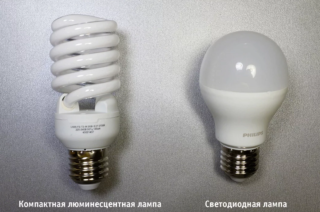
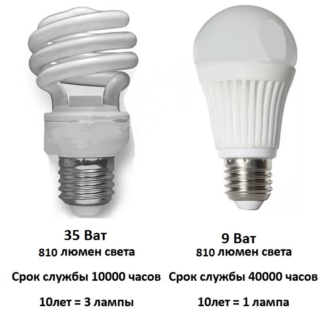
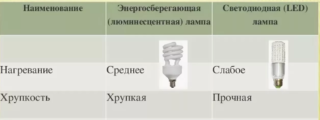

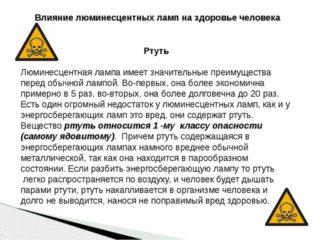
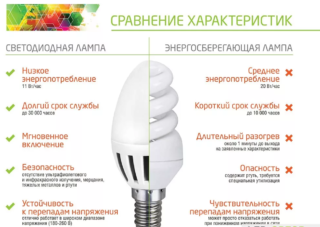








LED lamps are not reliable with a lifespan from a month to six months! Fluorescent lamps from six months to 5 years, checked by me personally! The LEDs are full of shit, the same technique, the same TVs, are full of bullshit for a year and a half, one light will burn out and the TV needs repair. So you need to learn how to do it with high quality and then release products for sale.
I agree with Max. None of the LED lamps I bought have worked for 2 years, what are they 10 ???
More than 4 years ago, he completely switched home lighting to LED lamps and fixtures. Until not one device burned out. Electricity is not burned, despite the bright light in all rooms. I used to use energy-saving fluorescent bulbs, but they often burned out.
All the energy savings are eaten by the cost of the LED lamp and the short life of the lamp itself, as well as the negative impact on vision.
I bought 2 LED lamps for 85 r a month later, both burned out.
Mercury containing lamps-haze with disposal
When the LED lamp was turned on, TV channels from 11 to 20 did not work. I changed it to a simple one, everything is fine.
They all burn out quickly
In 4-5 years, 4-5 LED lamps were replaced. Luminescent full of rubbish due to flicker. I use incandescent lamps in the old fashioned way.
We must keep the packaging and the receipt from the store. 1 year warranty. it's okay to change if it burns out.
LED lamps (two) have been working for four years now, one in the house, one on the veranda both in winter and in summer, 12 W each, no problem.